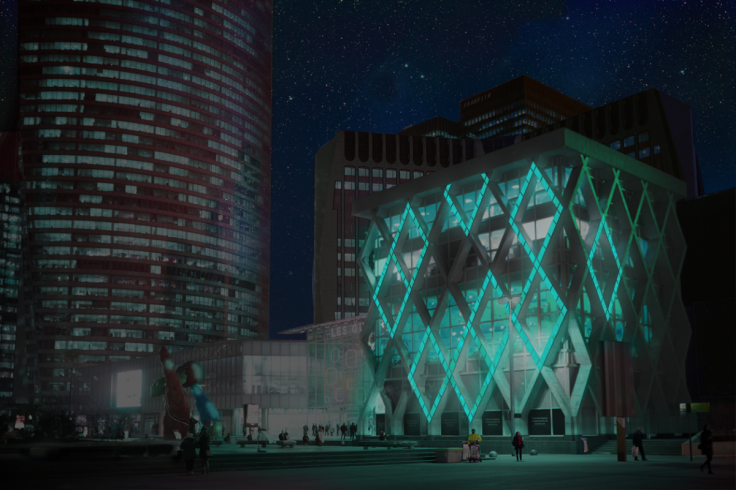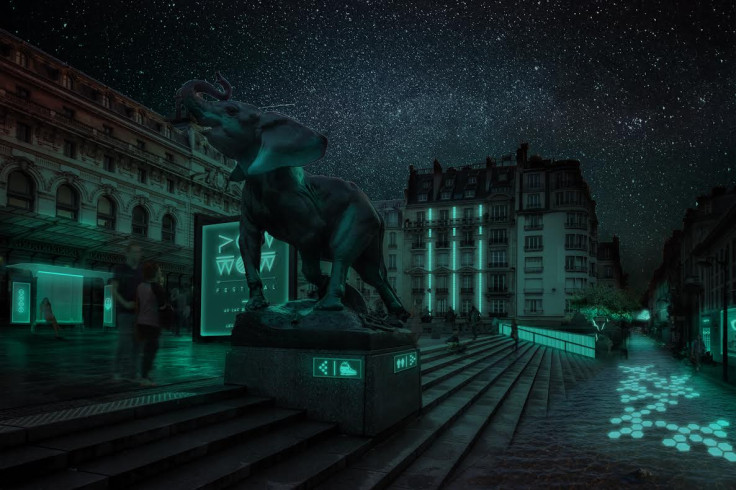Electricity-free lighting inspired by algae could see glow-in-the-dark high streets

A Parisian start-up company, Glowee, has adapted the naturally occurring phenomenon found in different kinds of algae, fireflies and squid to create an electricity-free, low-pollution method of lighting, which it hopes will brighten high-street shop windows of the future with a jolt of energy, fresh from the aquatic depths.
Glowee's creations are the result of a scientific adaptation of the natural process of bioluminescence where light is produced via a chemical reaction by various water-dwelling flora and fauna. The company claims its experiments have succeeded in creating a 'magic' light consisting of cultivated, raw living materials that accurately mimics how over 90% of marine organisms produce bioluminescent light.
The entire process results in glow-in-the-dark lighting technology that not only requires no electricity to run, but once combined with the company's transparent shells, the bio-lights can also be manipulated to form almost any shape and can be stuck to windows and are completely wireless.
Where could the technology be used?
Glowee's commercial intent for its unique lighting technology could potentially alter the way high-street stores are lit, especially in the company's home nation of France where a law passed in 2013 decreed that all stores and offices may not have window lighting turned on between the hours of 1am and 7am. Initially, Glowee's bacteria-powered natural lighting solution was designed to combat this very ban as its technology was proven to dramatically reduce CO2 and light pollution and was therefore acceptable despite the law.
Now, however, the once crowd-funded company is exploring the future potential of its "cold, soft and unique light" that appears transparent during the day and has a luminescent glow at night. With shop-front lighting intended for a feasible commercial launch in 2017, according to Glowee's website, its next goal is to bring its lucent creations to the broader infrastructure of urban landscapes.

The start-up's ambitious targets could see our commercialised streets filled with its pelagic-tech, with entire buildings, street-signs, furniture and decorations getting the bio-treatment. On an even broader scale, Glowee has claimed that airport runways and road construction warning signs could also be ideal candidates for its creations.
What are the concerns?
Reports have been quick to note the drawbacks of Glowee's long-term ambitions, as even recent prototypes have only been capable of generating light for three days. "If you do the math, it doesn't make sense, especially when you factor in how incredibly efficient LED lighting has become," Edith Widder from the Ocean Research & Conservation Association in Fort Pierce, told New Scientist, citing costs of production and the need to replace the nutrients in Glowee's bio-lights.
This, however, has not halted the company's ambitions, as the team are now at work on developing a 'molecular switch' that will allow potential commercial partners to 'switch off' the lights during the day and maintain the nutrient supply for even longer.
Despite the concerns about the practicality of its lighting solution, the company believes that having raw materials that exponentially develop in lab conditions (a factor that Glowee states will continue to offer the "outstanding potential of scalability" for future projects) as well as being able to count a number of notable clients, including French electricity network ERDF and the eco-aware, global ice-cream manufacturer Ben and Jerry's, will ultimately prove that its low-emission, natural solution to lighting urban areas could find itself a unique place in the commercial lighting market.
© Copyright IBTimes 2025. All rights reserved.




















